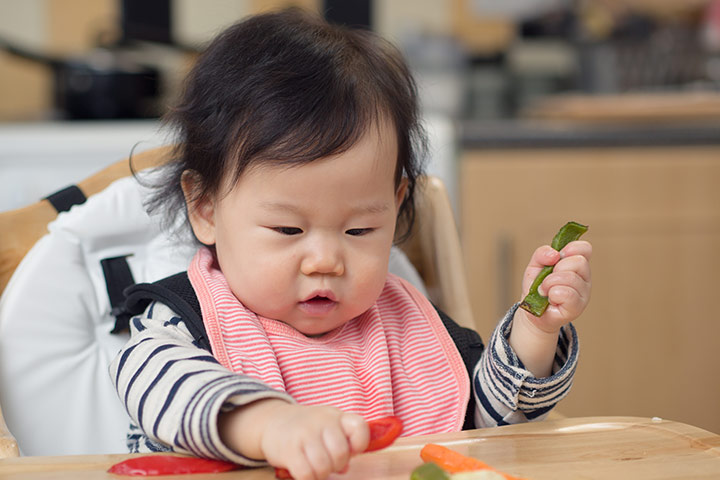
Image: Shutterstock
Worrying about what your baby eats is common for every woman as soon as she becomes a mother. Any mother would vouch for it! Right at the onset, she worries about getting breastfeeding right for her infant. Or scheduling the right routine for formula feeds. But a mommy can be equally excited and nervous when the time comes to start her baby on solids. Questions like when to start or what type of solid food to start with can boggle her mind. To help mothers stuck in a similar situation, we give you here a low down of how to go about the phase of introducing solids to your baby:
When Are Babies Ready For Solids?
Typically, babies can start having solids from 6 months because breastfeeding is usually recommended until that age. However, some babies can start on solids as early as 4 months of age. But this doesn’t mean you have to cease breastfeeding altogether. No. When we say starting on solids, it means that it should be done in combination with breastfeeding or formula feeding (1).
Image: Shutterstock
Signs That Your Baby Is Ready For Solids
One of the important changes that a baby undergoes before starting on solids is the motion of the tongue. Around the time they are ready for solids, they stop using their tongues to push food out of their mouths. Instead, they start developing the coordination where they use their tongue to push the food back in for swallowing. The other signs that you should look out for are:
- Baby holding head in an upright position
- Baby being able to sit with support
- Baby starts putting in toys or hands in the mouth
- Baby becomes curious about the food you eat or opens mouth on seeing food
If you see all these signs in your baby and your doctor gives the green signal, then you can start introducing solid foods to your baby (2).
What To Start With?
Image: Shutterstock
You should continue breastfeeding or formula feeding your baby. Along with it, here’s what you can do:
Keep It Simple: Right at the onset, start with single-ingredient foods that are not too high in salt or sugar content. Start with just one feed. Wait for 2-3 days for signs of any allergy or adverse reaction. Repeat the same food again. This time wait for a shorter period of time. Do it until your baby starts taking the food daily. Then gradually increase it from a one-time feed to 3 times a day.
Add Fruits And Vegetables: Once your baby starts tolerating solids well, slowly introduce pureed fruits and vegetables. Go with cooked or boiled fruits and veggies first. You can try potatoes, sweet potato, boiled carrots, apples, etc. Wait for 2-3 days after the introduction of each new food to look for adverse reactions. Then continue if tolerated well.
Baby Cereal: Most of the baby cereals are fortified with iron and zinc that are essential for your baby’s growth. Again, start with a single flavor cereal like rice-based cereals. Move to combination cereals only after your baby tolerates it well. Use breast milk or formula to mix the cereal. However, don’t try to feed the cereal from the bottle. The baby will find it hard to feed on. Instead, feed your baby with a small spoon in an upright, seated position.
Finger Foods: By the time your baby is 8 – 10 months of age, you can introduce finely chopped finger foods like carrots, soft fruits, pasta, cheese, or baby crackers (3).
Image: Shutterstock
What To Do If The Baby Refuses Solids?
Introducing anything new wouldn’t be easy for you and your baby. The most immediate reaction of your baby will always be rejection at first. But don’t give up on it or force your baby. Instead, give a break for a week or two before trying again. However, if the problem persists, do check with your doctor.
Introducing solid food to your baby is a major milestone in your baby’s developmental journey. So, be patient and don’t lose hope quickly. Soon, your baby will take a liking to the new change and before you know it, you’ll already be dishing out new recipes for your munchkin!















